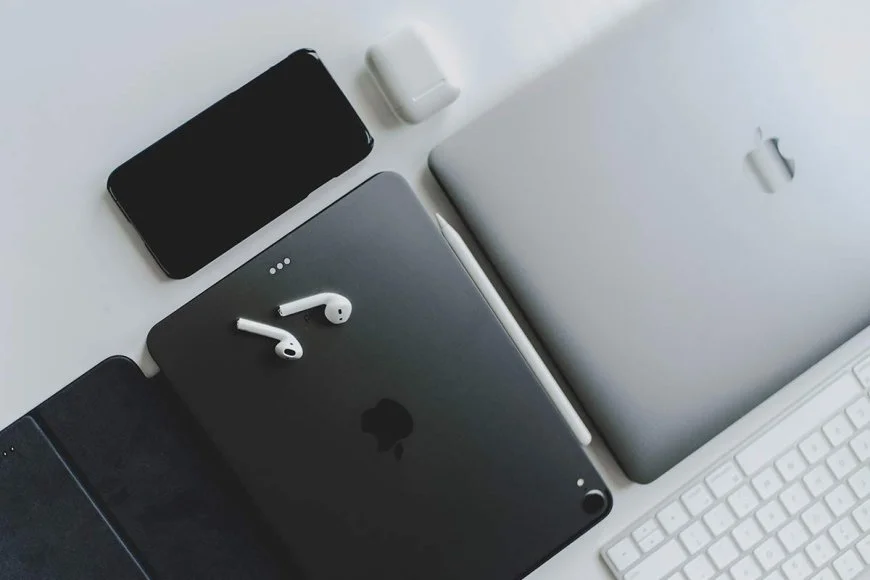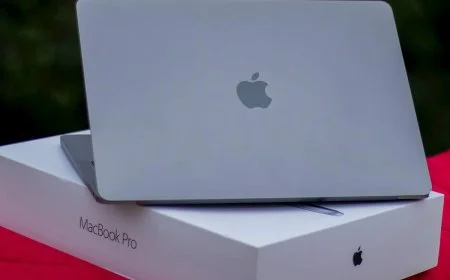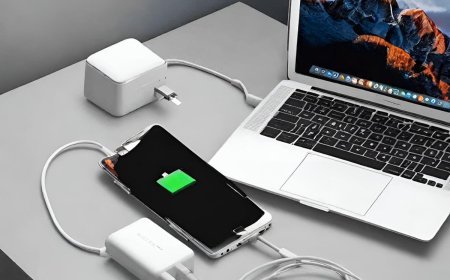How to Unsync iPhone from Macbook: Easy Guide 2024
Unsync your iPhone from MacBook easily with our step-by-step guide. Disconnect and stop automatic syncing in just a few simple steps.

Are you tired of your iPhone and MacBook sharing data within the Apple ecosystem without your consent? It's time to take back control of your Apple account! Syncing your devices within the Apple ecosystem can be convenient, but it also poses a risk to your privacy. Luckily, unsyncing them is simpler than you might think.
By following a few easy steps, you can prevent any further data exchange between your iPhone and MacBook within the Apple ecosystem. No more accidental syncing or unwanted access to personal information. Regain the freedom to use each device independently within the Apple ecosystem without worrying about cross-contamination of data.
In this guide, we'll walk you through the process of unsyncing your iPhone from your MacBook within the Apple ecosystem, ensuring peace of mind and safeguarding your digital boundaries.
Unleash the power of independence by disconnecting your internet, signing out of your phone, and removing any USB devices today!
Disable Text Message Forwarding
Are you tired of receiving text messages on your MacBook from your iPhone in the Apple ecosystem? It can be quite inconvenient and even risky when sensitive information is displayed on multiple devices. Fortunately, disabling text message forwarding for iCloud sync is a simple process that can be done in just a few steps using your Apple account on macOS Monterey.
To stop receiving text messages on your MacBook, sign out of your Apple device and disable iCloud sync.
-
Launch the Settings app on your iPhone.
-
Scroll down and tap on "Messages."
-
In the Messages settings on your phone, scroll until you find the "Text Message Forwarding" option. Using this feature, you can easily send and receive messages from your phone to another device, such as a tablet or computer. It's a convenient way to stay connected and keep all your messages in one place. When you're done using the feature, simply sign out to ensure the privacy of your messages. Don't forget to take notes of any important information exchanged through this vice.
-
Toggle off the switch next to your MacBook's name.
By following this step and turning off text message forwarding, you can regain control over where you receive your messages. This will prevent any potential privacy breaches by ensuring that all incoming messages only appear on your iPhone and not get synced to your MacBook anymore.
Disabling text message forwarding offers several benefits:
Prevent Sensitive Information from Being Displayed on Multiple Devices
When you receive a text message, the first step is to ensure the security of sensitive information. By unsyncing your iPhone from your MacBook, you can reduce the risk of unauthorized access to personal details or confidential data.
Maintain Focus on Your Phone
When working or using your MacBook for other tasks, it's best to sync notifications to one device only – in this case, your iPhone. Disabling text message forwarding ensures that important calls or texts won't go unnoticed while minimizing distractions caused by unnecessary alerts. This step helps maintain focus and productivity.
Streamline System Settings
By disabling the sync feature, you simplify the system settings between your iPhone and MacBook. Rather than toggling between devices when managing messages or calls, everything remains centralized on one device – making it easier to navigate through various features without confusion. This step simplifies device management and improves efficiency.
Turn Off Handoff on Mac and iPhone
The Handoff step feature on your Mac and iPhone allows for seamless syncing of activities between devices. While this can be convenient in some cases, there may be times when you want to disable the Handoff step to ensure privacy or prevent the automatic transfer of tasks and apps.
Disabling Handoff on Mac
To disable Handoff and sync on your Mac, follow these simple steps.
-
To sync your devices, follow these steps. Open the "System Preferences" app from the Apple menu, located at the top-left corner of your screen.
-
In the System Preferences window, locate and click on the "General" icon to sync your devices.
-
Within the General preferences pane, look for the "Allow Handoff between this Mac and your iCloud devices" checkbox. This is an important step to enable seamless communication between your Mac and iCloud devices.
-
Uncheck this box to disable Handoff.
Once you have completed these steps, Handoff will be turned off on your Mac, preventing any further syncing with other devices.
Turning Off Handoff on iPhone
To disable Handoff on your iPhone, follow the step-by-step instructions below.
Method 1: Using Settings
-
Open the "Settings" app on your iPhone's home screen.
-
Scroll down and tap on "General."
-
Next, tap on "Handoff & Suggested Apps."
-
Finally, toggle off the switch next to "Handoff."
Method 2: Using Control Center
-
To access Control Center on your iPhone, simply follow this step: swipe up from the bottom edge or swipe down from the top-right corner of your screen.
-
To access the network settings card in Control Center, follow this step: tap and hold (or firmly press) the card located in the top-left corner.
-
Look for a labeled "AirDrop" card, which controls Handoff settings in a step.
-
Tap once to open the first step, then select "Off" to disable Handoff.
By following these step-by-step methods, you can easily turn off Handoff on your iPhone and prevent any further syncing with your Mac or other devices.
It's important to note that disabling Handoff is a necessary step that will not impact the functionality of other features like FaceTime or app usage on individual devices. Each device will still function independently, but the automatic transfer of activity between them will be disabled.
Prevent Mac from Joining iPhone's Personal Hotspot
Avoid unintentional connection of your MacBook to your iPhone's hotspot
Have you ever found yourself in a situation where your MacBook automatically connects to your iPhone's personal hotspot without your consent? It can be frustrating, especially if you're trying to conserve data or maintain a secure network connection. Fortunately, there are steps you can take to prevent this unintentional connection and regain control over your network settings.
To avoid the hassle of an automatic connection, follow these simple steps:
-
Open the "System Preferences" on your MacBook.
-
Click on the "Network" icon.
-
In the left sidebar, select "Wi-Fi."
-
When setting up the network, take the step to find the checkbox labeled "Automatically join this network."
-
Ensure that the checkbox is unchecked.
By following this step and disabling this option, you can prevent your MacBook from automatically connecting to any available personal hotspots, including those from your iPhone.
Securely manage network connections and avoid unnecessary data usage
Keeping control over which networks your MacBook connects to is an important step in managing data usage and enhancing security. By preventing unintended connections, you can reduce the risk of joining unsecured or malicious networks that could compromise sensitive information.
Here are some additional tips for securely managing network connections, step by step.
-
Regularly review and delete saved Wi-Fi networks as a step that you no longer use.
-
Step up your security by enabling two-factor authentication when connecting to personal hotspots.
-
Consider taking the step of using a virtual private network (VPN) when connecting to public Wi-Fi networks.
-
To benefit from enhanced security features, it is important to take the step of keeping your devices updated with the latest software versions.
Taking these safeguards will help ensure that you have control over which networks your MacBook joins. Follow these steps to safeguard both your personal information and maintain control.
Learn how to disable the option for easy access in just a few clicks
Disabling the automatic connection feature is straightforward and requires only a few clicks. By following these steps, you can easily prevent your MacBook from joining your iPhone's personal hotspot:
-
Open the "Settings" app on your iPhone.
-
Tap on "Personal Hotspot."
-
Scroll down and locate the step option that says "Allow Others to Join."
-
Toggle the switch to off.
By disabling this step option, you ensure that only devices you explicitly allow can connect to your iPhone's personal hotspot, preventing any unwanted connections.
Unpair iPhone from MacBook via Bluetooth
Disconnecting your iPhone from your MacBook through Bluetooth settings is a simple and effective way to eliminate unwanted pairing and ensure device independence. In this guide, we will provide you with a step-by-step approach to unpair your iPhone from your MacBook without complications.
To begin the process of unsyncing your iPhone from your MacBook, follow these steps:
-
To access the "System Preferences" on your MacBook, follow these steps: 1. Click on the Apple logo located in the top-left corner of the screen. 2. Alternatively, you can use Spotlight search by pressing Command + Space and typing "System Preferences."
-
Within the first step of "System Preferences," locate and click on the "Bluetooth" icon. This will open a new window displaying all the Bluetooth devices connected to your MacBook.
-
In the first step of the process, locate and choose your iPhone from the list of connected devices. Your iPhone will be displayed as one of the paired Bluetooth devices.
-
Once you have completed the first step of selecting your iPhone, simply click on the "X" button next to its name to successfully remove it from the list of paired devices.
-
To unpair the device, follow this step: A confirmation dialog box will appear asking if you want to remove the device. Click on "Remove" to proceed with unpairing.
By following these steps, you have successfully disconnected your iPhone from your MacBook via Bluetooth settings. Your devices are now no longer synced, providing you with greater independence and control over their connectivity.
Unsyncing your iPhone from your MacBook offers several benefits:
-
By taking the step of disconnecting via Bluetooth, you can improve privacy and prevent any accidental or unauthorized access between devices.
-
Enhanced Performance: One step to optimizing both device's performance is by removing unnecessary pairings. This can reduce potential interference and enhance overall performance.
-
Unsyncing is a crucial step in achieving a simplified workflow. It enables a more streamlined experience when using each device independently, ensuring efficiency and ease of use.
Remember that unsyncing via Bluetooth is a necessary step to disconnect wireless connectivity between devices. However, it's important to note that this process does not affect other forms of synchronization, such as iCloud or iTunes backups.
Manage iCloud Drive in Files App and Finder on MacBook
Maximize productivity and stay organized by following these simple steps to organize, sync, and access files stored in iCloud Drive on your MacBook. The seamless integration across devices ensures ease of use and efficient file management.
Accessing iCloud Drive
To access your iCloud Drive on your MacBook, you can utilize either the Files app or Finder. The Files app is a new step available starting from macOS Monterey, while Finder has been a long-standing feature for managing files on Mac.
Using the Files App
-
To open the Files app, follow this step: click on its icon in the Dock or search for it using Spotlight.
-
Once opened, click on "iCloud Drive" located under "Locations" in the sidebar.
-
Here you will find all your files stored in iCloud Drive categorized into folders based on file types or custom organization.
-
To open a file, simply double-click it, and it will open with the default associated app.
Utilizing Finder
-
Open a new Finder window by clicking on its icon in the Dock or selecting it from the menu bar at the top of your screen.
-
In the sidebar of the Finder window, locate and click on "iCloud Drive" under "Favorites."
-
Similar to using the Files app, you can now browse through your files stored in iCloud Drive and open them as needed.
Syncing Files with iCloud Drive
One of the key benefits of using iCloud Drive is its ability to keep your files synced across multiple devices seamlessly.
To ensure that syncing is enabled:
-
Go to Apple menu > System Preferences > Apple ID.
-
Click on "iCloud" from the left-hand side panel.
-
Ensure that "iCloud Drive" is checked to enable syncing between your Mac and other devices connected to your iCloud account.
Organizing Files in iCloud Drive
Keeping your files organized is essential for efficient workflow. With iCloud Drive, you can easily create folders and move files around to maintain a structured system.
To organize your files:
-
Open the Files app or Finder and navigate to the desired location within iCloud Drive.
-
Right-click on an empty space and select "New Folder" to create a new folder.
-
Give the folder a descriptive name that represents its contents.
-
To move files into the newly created folder, simply drag and drop them onto it.
Managing iCloud Drive Settings
Customizing your iCloud Drive settings allows you to tailor its behavior according to your preferences.
To manage iCloud Drive settings:
-
Open Apple menu > System Preferences > Apple ID.
-
Click on "iCloud" from the left-hand side panel.
-
In the main window, click on "Options" next to "iCloud Drive."
-
Here you can choose which apps have access to iCloud Drive and selectively enable or disable syncing for specific apps.
By following these simple steps, you can effectively manage your iCloud Drive on your MacBook using either the Files app or Finder, ensuring easy access, organization, and synchronization of your important files across all your devices.
Remember, staying organized with iCloud Drive not only boosts productivity but also provides peace of mind knowing that your files are securely stored in the cloud while remaining easily accessible whenever you need them.
Disconnect iPhone or iPad from Mac: Turn Off Airdrop and Bluetooth Connections
Enhanced Security with AirDrop Disconnection
To ensure the security of your Apple devices within the Apple ecosystem, it's important to disconnect your iPhone or iPad from your MacBook. One way to achieve this is by turning off the AirDrop connection. By doing so, you can prevent unauthorized access and protect your personal information.
AirDrop allows seamless sharing of files between iOS devices and Macs over a wireless network. However, keeping AirDrop enabled when not in use can pose potential risks. To disable AirDrop on your iPhone or iPad, follow these simple steps:
-
Open Control Center on your device by swiping down from the top right corner (on newer iPhones) or up from the bottom (on older iPhones and iPads).
-
Long-press or force touch the network settings card in Control Center.
-
Tap on the AirDrop icon to open its settings.
-
Select "Receiving Off" to turn off AirDrop completely.
By disabling AirDrop, you eliminate any chances of unwanted connections and safeguard your privacy.
Quick Bluetooth Disconnection
Apart from AirDrop, disconnecting Bluetooth connections between your Apple devices is another crucial step in ensuring complete disconnection. This process is quick and easy, taking only a few seconds:
-
Open Settings on both devices involved in the connection.
-
On each device, tap "Bluetooth" to access its settings.
-
Locate the connected device(s) under "My Devices" or "Paired Devices."
-
Tap on each device and select "Forget Device" or "Disconnect."
Once you've completed these steps for all relevant devices, you will have successfully severed their Bluetooth connections.
Multiple Ways to Disconnect
There are several ways to disconnect your iPhone or iPad from your MacBook aside from turning off AirDrop and Bluetooth connections:
-
Unpairing Devices: If you have previously paired your iPhone or iPad with your MacBook, unpairing them will ensure complete disconnection. Go to "System Preferences" on your Mac, select "Bluetooth," locate the iOS device in the list of paired devices, and click on the "X" next to it.
-
Turning Off Handoff: Handoff is a feature that allows seamless transitions between Apple devices. However, disabling this feature can help disconnect your iPhone or iPad from your MacBook. On your iOS device, go to "Settings," tap on "General," select "Handoff," and toggle it off.
By following these steps and utilizing different methods, you can effectively disconnect your iPhone or iPad from your MacBook, enhancing security and protecting both devices' battery life.
Remove Device from Apple ID Account
If you want to safeguard your personal information and maintain control over account access, it's important to remove any old or unnecessary devices linked to your Apple ID. By doing so, you can ensure that only the devices you currently use have access to your Apple account.
To begin the process of removing a device from your Apple ID account, follow these simple steps:
-
Sign in to your Apple ID account: Open the Settings app on your iOS device and tap on your name at the top of the screen. Then, scroll down and select "Sign Out" to log out of your Apple ID.
-
Access the "Devices" section: Once you've signed out of your Apple ID on the iOS device, go back to the main Settings menu and tap on "Apple ID." From there, select "Devices" under the iCloud section.
-
Identify the device you want to remove: In the list of devices associated with your Apple ID, locate the iPhone that you wish to unsync from your MacBook.
-
Remove the device: Tap on the device name and then click "Remove from Account." Confirm this action by selecting "Remove" again when prompted.
By following these steps, you can successfully remove an iPhone from your Apple ID account. This ensures that any personal data or sensitive information stored on that specific device is no longer accessible through your iCloud account.
It's worth noting that removing a device from your Apple ID does not erase any content or settings on that particular device. The removal process simply disassociates it from being linked with your account. If necessary, make sure to manually erase all data and settings directly on the iOS device before giving it away or selling it.
Successfully Unsync iPhone from MacBook
In conclusion, unsyncing your iPhone from your MacBook is a straightforward process that can be done by following a few simple steps. By disabling text message forwarding, turning off Handoff, preventing your Mac from joining your iPhone's personal hotspot, unpairing your devices via Bluetooth, managing iCloud Drive in the Files app and Finder on your MacBook, disconnecting your iPhone or iPad from your Mac by turning off Airdrop and Bluetooth connections, and removing the device from your Apple ID account, you can successfully unsync your iPhone from your MacBook.
To ensure a smooth unsyncing experience, it is important to follow these steps carefully. By doing so, you can avoid any potential issues and maintain control over the syncing between your devices.
If you're ready to unsync your iPhone from your MacBook and regain control over their connection, start by disabling text message forwarding and turning off Handoff on both devices. Then proceed to prevent the Mac from joining the iPhone's personal hotspot and unpair the devices via Bluetooth. Make sure to manage iCloud Drive in the Files app and Finder on your MacBook to further customize syncing settings.
Lastly, disconnecting your iPhone or iPad from your Mac involves turning off Airdrop and Bluetooth connections. Finally, remove the device from your Apple ID account to complete the unsyncing process.
By following these steps diligently, you'll be able to successfully unsync your iPhone from your MacBook without any hassle.
FAQs
Can I re-sync my iPhone with my MacBook after unsyncing them?
Yes! Unsycning doesn't permanently disable syncing between devices. You can easily re-sync them whenever you want by following the appropriate steps outlined for each specific sync feature.
Will unsyncing my iPhone delete any data?
No. Unsycning simply stops the automatic syncing of data between devices. It does not delete any existing data on either device. Your files, photos, and other data will remain intact.
Can I unsync my iPhone from multiple MacBooks?
Yes! The process of unsyncing your iPhone from a MacBook is the same regardless of how many MacBooks are connected to your device. Simply follow the steps outlined above for each MacBook you wish to unsync.
Will unsyncing my iPhone affect my iCloud backups?
No. Unsycning your iPhone from your MacBook does not impact iCloud backups. Your device will continue to back up its data to iCloud as usual.
What if I only want to unsync specific apps or features?
Unfortunately, it is not possible to selectively unsync specific apps or features between an iPhone and a MacBook. The unsyncing process affects all syncing between the two devices. If you wish to stop syncing for certain apps or features, you may need to explore individual settings within those applications themselves.
How often should I unsync my iPhone from my MacBook?
There is no set frequency for unsyncing your devices. You can choose to do it whenever you feel the need or when you want more control over their connection. It's entirely up to personal preference and usage patterns.
Can I still use AirDrop after unsyncing my iPhone from my MacBook?
Yes! Unsycning your devices does not disable AirDrop functionality. You can continue using AirDrop on both devices independently even after they have been unsynced.
These FAQs should help address any additional questions you may have regarding the process of successfully unsyncing your iPhone from your MacBook.
What's Your Reaction?







































![MacBook Pro M5: All the features and specs you need to know [LEAKS REVEALED]](https://tomsreviewbox.com/uploads/images/202502/image_430x256_67bd6d7cd7562.jpg)



























